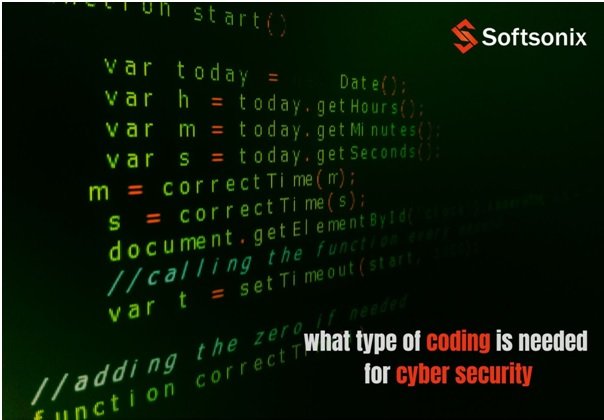What kind of coding is required for cybersecurity?

Credit - Pixabay
The value of cybersecurity in the digital age and the code needed for protection against cyberattacks are the main topics of this article. It focuses on intrusion detection systems, firewalls, encryption, authentication, and penetration testing. Programming languages that are regularly used including Python, C/C++, Java, and JavaScript. The growing roles of AI and machine learning (ML) in cybersecurity are also covered in the essay. Lastly, cybersecurity is discussed as a key defensive mechanism focusing on ongoing education to stay ahead of new threats.
Introduction
As we know we have entered the 21st century. In this digital and advanced era. In which information very easily becomes cyber threats. There comes the shadow of the importance of cyber security. the need for it cannot be ignored or overlooked. It acts as a shelter and a shield. To safeguard us from our online world. The attack of cyber crimes can be so painful. It is important to understand and ensure the confidentiality and the integrity of it. As well as the availability of the sensitive data. Behind the screen, there are so many types. The advanced types of coding play very important roles in protecting against the Cyber thread.
Understanding the basics: what is cyber security coding?
Cyber security coding greatly involves writing the program to provide the computer system as well as the network. It is more likely helpful in getting a very digital platform. The path of the code creates a barrier that in turn prevents unauthorised access and protects the valuable information.
Also Read -
1. Encryption: Securing the Secrets
One of the most important aspects of cyber security is the quality of coding. The feature of end-to-end encryption that it provides to us. It is simply like giving your messages a secret corner and to save the folder from the cybercrime hands. which can only be intended for the recipient to interpret with it. By using this and the algorithm the inscription will itself transform into legible data. which in turn makes it difficult. For anyone without the proper key to access it. This means that even if the cybercrime tries to interrupt it. the first time would not be able to fetch personal information at any cost.
2. Authentication: Verifying the Legitimacy
Authentication is one of the most important coding components of cyber security the process of verification is a very important aspect of the verification of the user and their system who are trying to enter a network this mainly involves the provision of a username password biometrics or multiple factors authentication on the other hand coding will create the protocol that is mainly responsible for getting it for them who get access to it who get denied and so on it is a kind of extra layer of Defence against the Unauthorised entry.
3. Firewalls: creating a Digital Barriers
Firewalls act as digital bouncers, which in turn help in controlling the traffic entering and leaving a network to maintain the balance. Coding for firewalls requires better-defining rules that ensure which data is packed. Which are allowed. And are blocked. This defensive barrier helps in preventing malicious software. And the unauthorized users from infiltrating the system.
4. Intrusion Detection Systems (IDS): The Watchful Eyes
Coding for Intrusion Detection Systems is like training a virtual watchdog. These systems check up on the network and system the activities, looking for doubtful behavior or patterns. The coded algorithms raise alarms. when potential threats are mentioned, allowing the cybersecurity experts to respond to the attacks.
5. Penetration Testing: Breaking In to Strengthen
In the globe of cybersecurity, it's not only about keeping intruders out. But it also includes understanding how they might get into it. Penetration and testing involve coding simulated cyber-attacks to identify vulnerabilities in a system. By understanding the potential weak points. And by it, the developers can then strengthen the defenses. Which in turn creates a more robust and resilient security infrastructure.
Programming Languages in Cybersecurity Coding: The Building Blocks
Different programming languages are in cybersecurity coding, each serving specific purposes. Here are a few key players:
1. Python:The Swiss Army Knife
Python is a versatile language used in cybersecurity. Its simplicity and readability make it an excellent choice. Examples of tasks like scripting, automation, and building security tools. From scanning for vulnerabilities to creating custom cybersecurity solutions. The language Python is a go-to language in the cybersecurity arsenal.
2. C/C++: The Power Duo
For tasks requiring speed and efficiency, C and C++ step in. These languages are used for building low-level programs. For example operating systems and device drivers. In cybersecurity, they play a very crucial role in many aspects. Such as in creating high-performance security applications and tools.
3. Java: Platform Independence
Java's "write once, run anywhere. The philosophy makes it one of the attractive choices for cybersecurity professionals. Applications coded in Java can run on various platforms. Which in turn enhances flexibility in deploying security solutions all across diverse systems.
4. JavaScript: Frontline Defence
JavaScript, usually associated with web development, also has a role in cybersecurity. It helps secure web applications, making them less susceptible. From online attacks like cross-site scripting. Additionally, JavaScript is the need to create interactive and dynamic elements. These elements improve the user authentication processes.
Staying Ahead: The Constant Evolution of Cybersecurity Coding
As technology advances, so do cyber threats. Cybersecurity coding must be developed to stay a step ahead of advanced actors. Constant Learning and starting new coding tools. And learning new languages is the need of professionals.
1. Artificial Intelligence (AI) and Machine Learning (ML): The Future Guardians
The evolution of AI and ML into cybersecurity coding is a game-changer. These technologies allow systems to learn. To adapt to upcoming threats quickly. By analyzing errors and anomalies. AI-driven cybersecurity solutions change detection capabilities. The automated responses mitigate risks.
Also Read -
2. Blockchain immutable security
It is one of the most popularly known basically for the role that it plays in cryptocurrency. It has the potential for various applications in cyber security. It can temper -control nature's decentralization of it. In return, it is one of the most promising solutions to the problem of improving the integrity of the data. It also gets the trust of the digital transaction world. For qualities it poses.
Conclusion
In conclusion, the above article. We can simply say that cyber security acts as a backbone. In the digital world. It is a kind of Defence mechanism in our life. That helps fetch sensitive information. Coding always ensures its presence in our online world. The demand for programming is growing in the upcoming days. It is very important to maintain the ability to fight against the cyber threat that is growing day by day. Overall, we can say that there is a very critical link between cyber security and IT roles. It helps to develop security against threats. It is the best solution to understanding the potential of the digital system.








